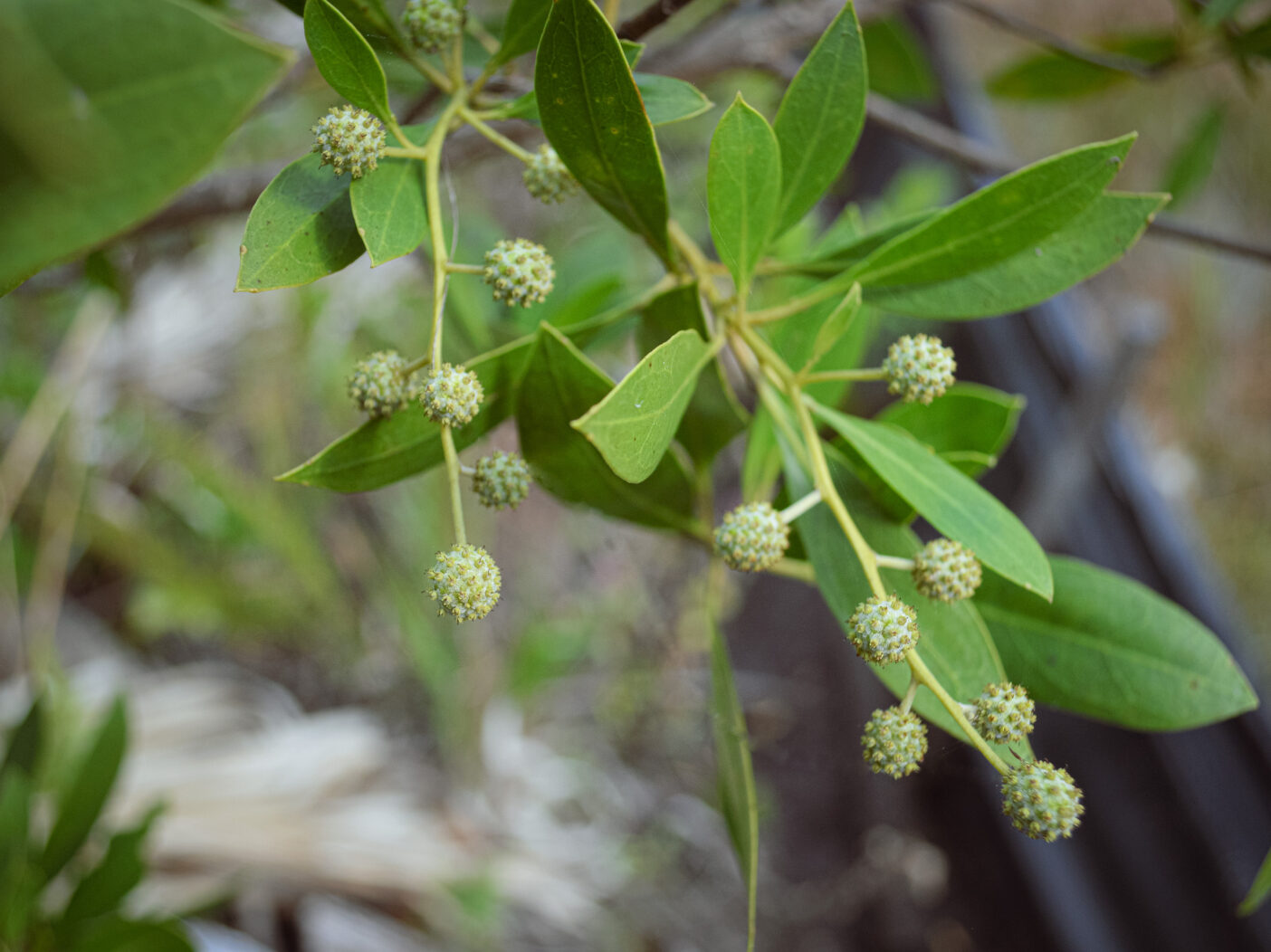
We’re getting new neighbors along the southern edge of our property.
Now, if we were like most any other property owner, we’d erect a fence, a wall, or a sound barrier to delineate the boundary between our marsh and these new residences.
But we’re a botanical garden, and as such, we’re taking an au naturel approach to adapt to neighborhood change, one that also advances our research into native plants and how to grow them.
Trust me when I tell you that tossing up a fence would be much easier!
Our staff has been trekking through muck, collecting buttonwood (Conocarpus erectus) seeds from our land, and experimenting to find the best way to sprout, grow, and transition them from nursery to brackish marsh. Ultimately, we hope these fast-growing buttonwoods (along with a smattering of other native plants, similarly collected) will develop into a dense tree line, maintaining a sense of wilderness for our guests, providing a lovely view for the homeowners, and creating additional habitat for the wildlife in our marsh.

We could purchase nursery-grown stock and save a whole lot of effort, but planting trees with genetics from elsewhere might alter the Garden’s ecosystem.
“We’re trying to keep our natural areas as locally native as possible,” explains Chad Washburn, Vice President of Conservation. “Local genetics are adapted to local conditions. We don’t want to plant something that’s from Central Florida or North Florida or even the East Coast. It could be a different adaptation, a different form.” As an example, he recalls a University of Florida experiment involving pickerelweed seeds collected from various parts of Florida and planted in a common garden. Plants from different regions bloomed at different times, even when grown under controlled, identical conditions.
Our 90 acres of natural areas provide important habitat and a living laboratory for our researchers, partners at Florida Gulf Coast University, and other visiting scholars. That’s why it’s so important not to sully them by introducing plant material from elsewhere. When it comes to scientific integrity, not all buttonwoods are created equal.
On a sunny Friday afternoon, Conservation Associate Jessica DeYoung agrees to show me where she and her colleagues have ventured for seeds. We take a golf cart and follow Thomasson Drive to the Garden’s boundary, the access point for the buttonwoods. Jessica grabs field supplies and two PVC pipes. Walking sticks, she explains, handing me one. To feel for roots and rocks and drop-offs hidden under water.
Within a few soggy paces, we lose sight of the road, the golf cart, the power lines, and find ourselves in the thick of a marsh. (Still with us is a low rumble of heavy machinery, a reminder of why we’re there.)

Buttonwood fruit, containing the seeds, are blueberry-sized and transform from pale green to brown as they mature. Jessica places ripe ones in a bag and records our coordinates. The conservation team keeps careful track of where they collect in case seeds from certain locations yield trees with positive attributes, such as disease resistance or, conversely, negative ones that limit their viability. The team has amassed more than 9,000 seeds. They’re hoping to grow 500 viable trees; the excess seeds are needed because there’s so little scientific literature on how to germinate or seed bank them, and our staff’s work is largely trial and error.
Stay tuned: Sometime in the future we may have news of Naples Botanical Garden adding to peer-reviewed research on this topic. In the meantime, we’ll keep you updated on this project and our many other botanical adventures.
 About the Author
About the Author
Jennifer Reed is the Garden’s Editorial Director and a longtime Southwest Florida journalist.

